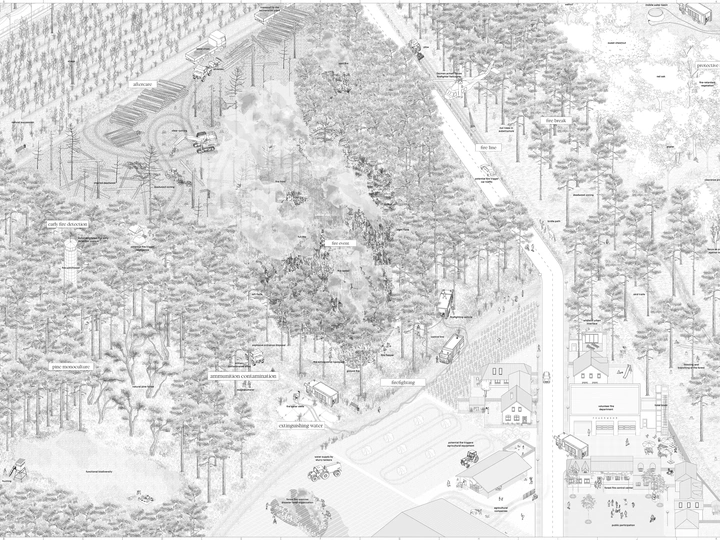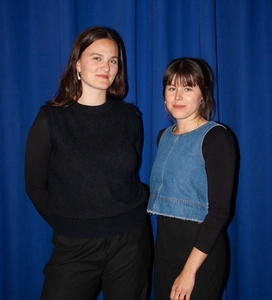Forest & Phoenix

Carolina von Hammerstein
Vera Kellmann and Carolina von Hammerstein both earned their Master's degrees in architecture from the Technical University Berlin. Their paths first crossed during their bachelor studies at the Bauhaus University in Weimar, where a shared curiosity for architecture beyond its formal boundaries brought them together. Over the years, their collaboration was shaped by diverse projects and working together in academic teaching. This exchange spans a wide range of topics and consistently interrogates the social relevance of architectural practice in relation the traditional architectural craft and its visual and spatial communication in order to enable the mediation, the accessibility and the interdisciplinary exchange of knowledge.
For their master thesis Forest & Phoenix they received the EU Mies Award Young Talent 2025. With this work, Carolina and Vera have created an interdisciplinary, design-driven, and materially reflective project that unites theoretical research and architectural practice. Their work demonstrates how architecture, when understood as an inclusive and collaborative discipline, can offer concrete responses to pressing global challenges—such as wildfires and ecological transformation.
This approach reflects their broader architectural understanding: a critical, research-based design practice that sees architecture as a tool for mediation.
Forest fires are not only the result of climatic changes, but require a consideration of the interdependencies between territorial and social changes over time that favor this phenomenon. The concept of this work promotes the idea that architecture in the 21st century should be an inclusive practice that incorporates different forms of knowledge. The complexity of forest fires require a holistic approach involving various disciplines and experts.
In the first part of the work, the collected knowledge is summarized in a book and illustrated with analytical drawings and diagrams. The book is extended by a map illustrating parallel processes and temporalities. In response to the increase in forest fires, the state Brandenburg is planning to establish a forest fire competence center for coordinated collaborations between various disciplines. Our design reinterprets the current planning for the center to include a public-effective level and creates hybrid structures that promote synergies of seemingly independent processes. Architecture can be seen as a mediator of the correlations in order to make them visible. These four structures, each dedicated to a specific aspect of wildfire management, organize the center as a decentralized network. The focus of the design concept is the transformation of individual knowledge into collective knowledge. Visibility and transformation of the buildings through use, time and volume are key aspects of the design and determine the appearance and functionality of the architecture. The hybridity in the designs and the constructive details themselves attempts to unite the two levels of poetry and reality of the forest habitat.
Materiality is a central element of the design concept. After forest fires, the charred trees are felled and the potential of this value chain remains unused. The structures are intended to test how this wood can be used and refined by the fire itself in order to promote the sustainable use of wood as a resource.
